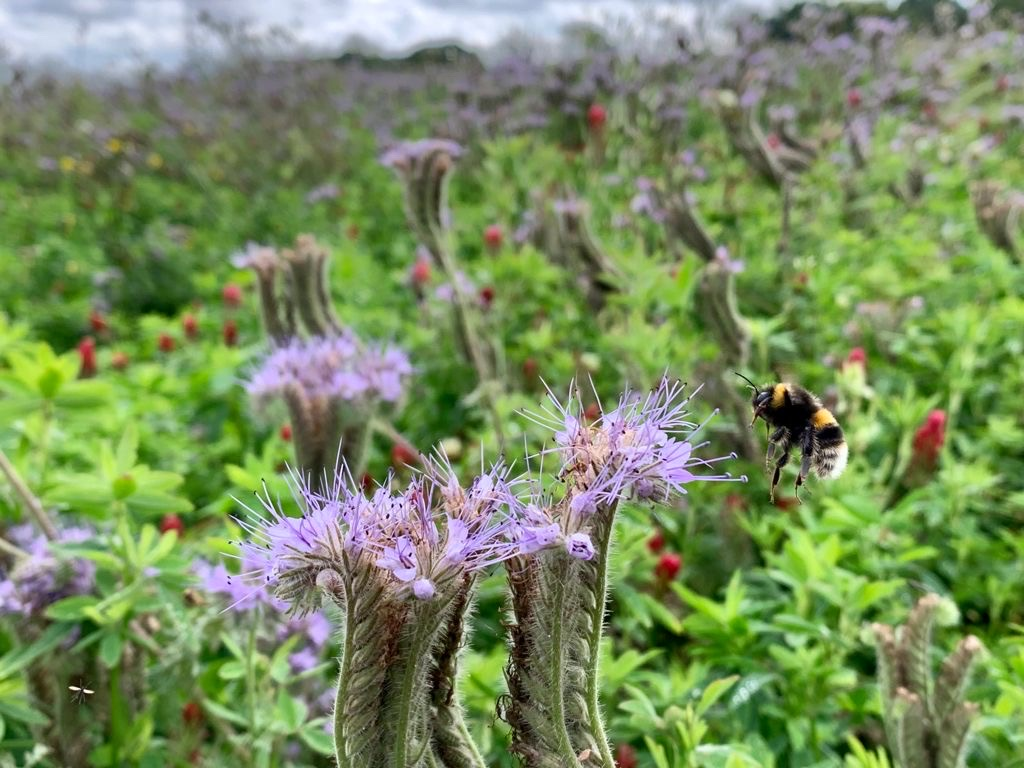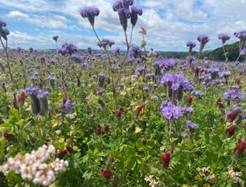Bare land – do you know what to do with yours?
There's no doubt that the start of the 2023 growing season was challenging across the country, with the wettest March in 40 years being followed by the wettest start to April in the last five. As we headed into May, ambient temperatures were still slow to rise, so I think many would agree that conditions were less than ideal this spring.
While we may be entering the height of summer now, severe downpours back in late May impacted some regions and many areas of land were again waterlogged. Soils have struggled as a result and unsurprisingly, getting jobs done in the 'ideal window' was difficult for many - especially if trying to avoid causing any damage. The coin eventually flipped, with several regions going on to face drought conditions. Although some areas have since received rain, soil conditions remain less than preferable across the country.
As growers review their cropping plans with all of this in mind, I've been supporting them on a near weekly basis to ensure they reflect current conditions. At present and as we've seen in other seasons, spring and summer cropping opportunities remain unpredictable, so if some bare land is looking a likely scenario for your farm, you may want to think about the best approach and how to get the most from it.
What are the opportunities for bare land?
With an increased focus on the Sustainable Farming Incentive (SFI) in England, which is set to replace the Basic Payment Scheme (BPS), it's worth exploring some of the land-use opportunities associated with the actions that are being launched in 2023 and the options that sit within it. Some can work really well alongside the wider farm rotation, contribute important environmental benefits and open up additional revenue streams.
The SFI payments due to be released later this year will match Countryside Stewardship rates and will be available for 'field scale' activities – for example, winter bird food (AB9) plots paying £732.00/ha or Pollen and Nectar paying £614.00/ha.
Another option could be to consider a summer cover crop as they can be quick to establish and offer large returns over a short period of time. Cover crops thrive over the summer period by using the warm conditions to produce large amounts of biomass. Nitrogen fixing species are particularly active over summer too due to the warm soil conditions, giving a real opportunity to boost your soil fertility.
The Kings Summer Legume Mix is one of our 'top picks' for summer cover this year and it has the following benefits:
- It's a brassica-free mix, so can be used ahead of OSR
- Diverse rooting structure offers soil structure enhancement
- Reduces the risk of soil erosion
- Potential to fix 50-60kg/ha of nitrogen over a three-to-four-month period
- Produces a large, visually attractive crop canopy
- Provides essential pollen and nectar for pollinating insects in late summer.
For those of you who are in Scotland and have an Ecological Focus Area fallow land (EFAFAL) agreement, you can establish a wildflower or wild bird seed mix during the fallow period. I recommend our Annual Pollen and Nectar Mix which offers a pollinator habitat, soil improvement benefits and potential nitrogen fixation from the clover in the mix.
Find out more about these mixes in the 2023 Kings Catalogue.
Using digital tools to identify optimal land use
Digital solutions such as satellite imagery, maps and scouting tools can help you measure the condition and overall performance of your land so that, in situations where it may be left bare or even where conditions/position mean it isn't viable for commercial crops, you can plan more appropriate options. For example, you may discover some land perfect for a summer cover crop.
Frontier has a broad offer of digital tools available in its MyFarm platform, all of which can provide some really useful insights. For example, by using the MySOYL mobile app you can use its scouting technology to physically map features and points of interest in a field as well as across the whole farm. Soil nutrient maps, for example, could provide a good indication as to whether or not bare land would benefit from cover crops or nitrogen fixing plant species.
The technology doesn't stop there; all of this information can be linked to the MySOYL desktop application and its environment manager tool, with all members of your team able to access the data and insights to aid collaborative decision-making.
Once you have decided on some ideas, your Kings, SOYL or Frontier contact could introduce you to MyFarm analytics. This helps you benchmark crop production costs and could highlight any financial opportunities across the farm that may be lying undiscovered.
More information about the digital solutions listed above can be found here, our you can email the dedicated support team at This email address is being protected from spambots. You need JavaScript enabled to view it..
Considerations for game management
As with farming, gamekeepers and game managers have faced many challenges in the industry, from the impact of the pandemic to proposed policy changes and avian flu.
However, when looking at cropping opportunities for bare land, considerations around game management remain an important priority for some landowners.
If you're in England and considering shoot or conservation areas in place of bare land, it's worth exploring some of the opportunities associated with the SFI and Stewardship. Some of the actions and options available as part of these schemes could bring in additional revenue to both the farming and sporting sides of your business, whilst also providing for biodiversity.
With many factors at play to influence and change decisions linked to bare land, it's important to consistently review the situation you are in and take sound advice. By following the guidance I've outlined in this blog or seeking support from your advisor, you may discover opportunities that could be of great benefit to your farm business.
If you'd like more support with your cropping plans, please get in touch with your Frontier, SOYL or Kings advisor. Alternatively, you can get in touch.
As a subscriber, you’ll receive email alerts each time a new blog is published so you can always stay updated with the latest advice and insights from our experts






Comments